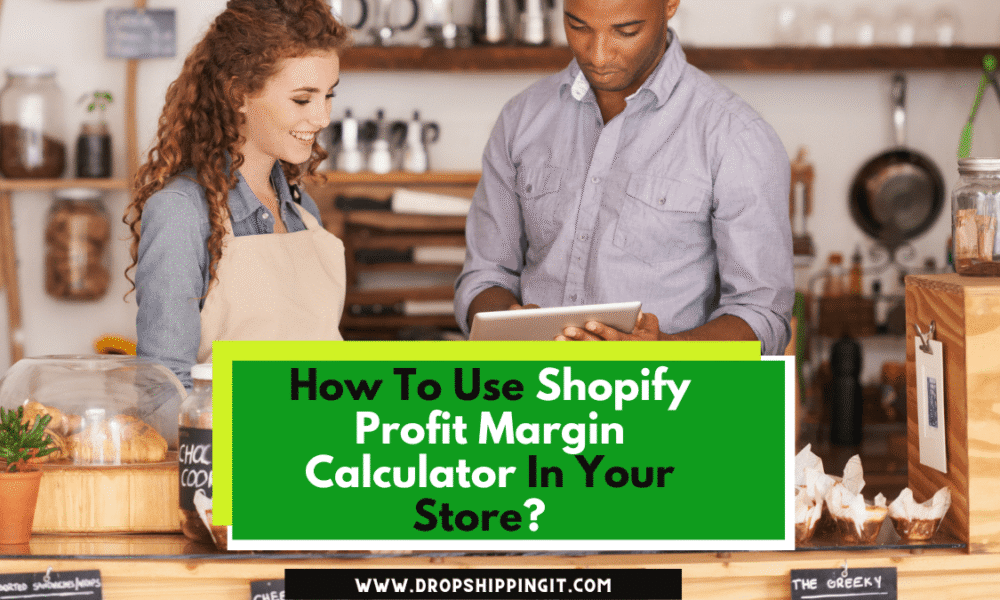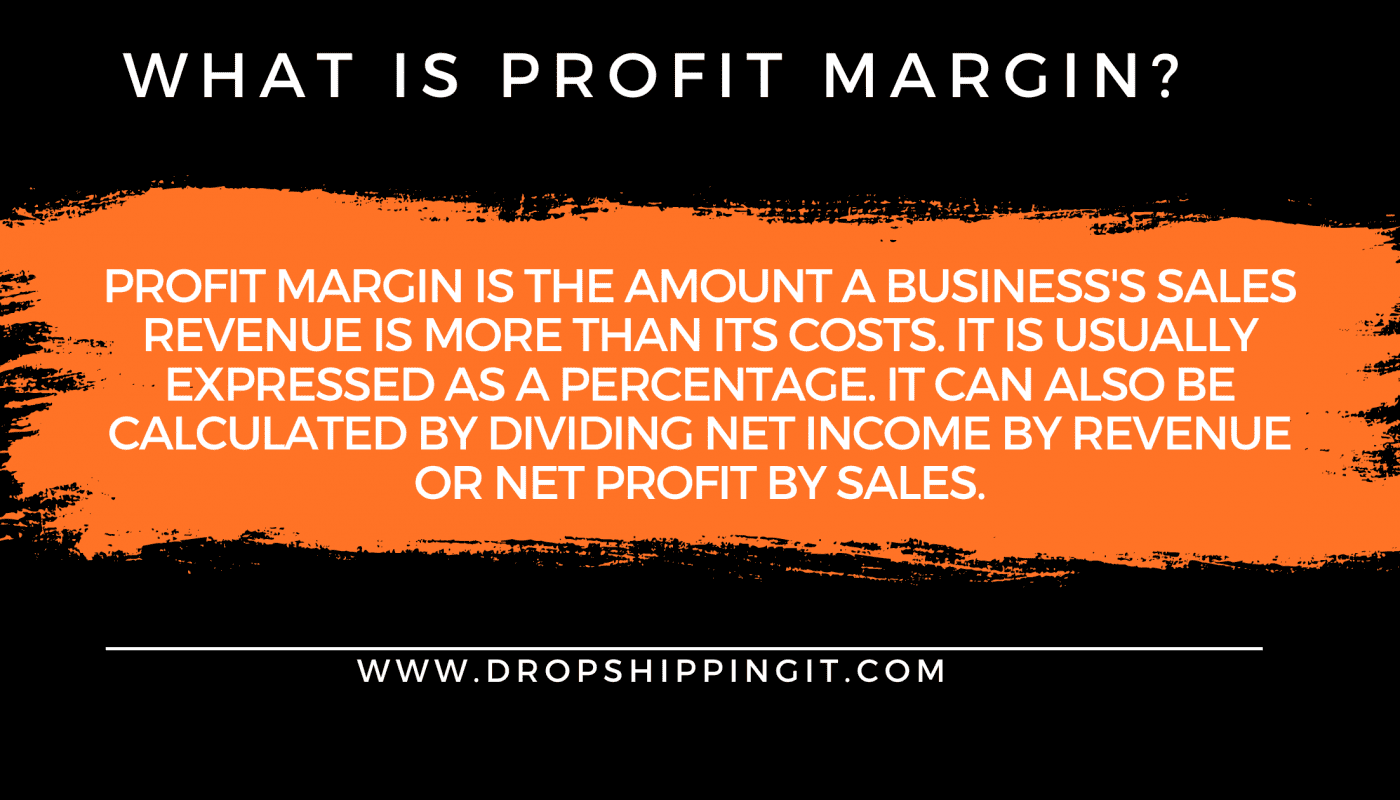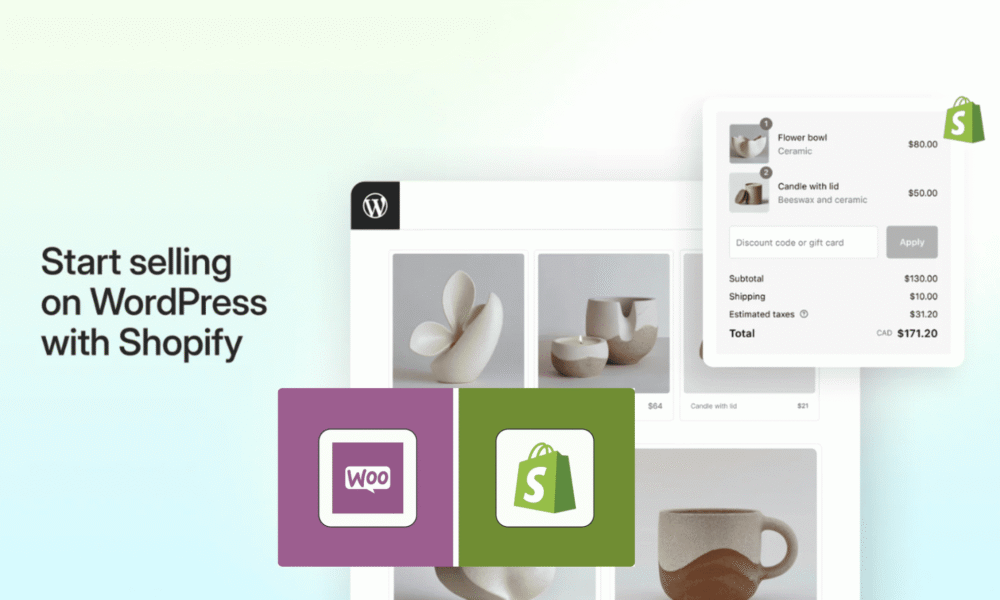If you love WordPress CMS but you want the power of Shopify's…
How To Use Shopify Profit Margin Calculator In Your Store

Shopify offers businesses a free tool called the profit margin calculator. That means there is no cost to using it. Instead, the Shopify profit margin calculator helps you price out how much money you will make from your products or services to set their prices smartly and strategically.
As a dropshipper, you can use the calculator to quickly and easily change your pricing structure or figure out your profit margins for many different products.
To use the calculator, you put in the cost of the product and the markup percentage. The calculator then figures out your selling price and your gross profit margin.
Before we start, you can also learn how to use the free Shopify Discount Calculator in your store; my recent post takes you through the entire process and how to use the free tool by Shopify.
Take Action!
This Free Shopify Profit Margin Calculator will help you determine Your product selling prices to save money and run a profitable Shopify store.

Background And Contemporary Application
In different situations, the word “margin” can mean many things, such as the edge or border of something or the amount one thing falls short of or exceeds another. For example, regarding money, margin can refer to a few different things.
First, it can be the difference between a product or service’s selling price & its cost of production. It can also be the ratio between a company’s income and expenses.
It can also mean the amount of equity an investor puts up as a percentile of the current market value of securities in a margin account or the portion of the interest rate on an adjustable-rate mortgage included in the adjustment-index rate.
Margin Trading
Margin trading is buying and selling financial assets with money borrowed from brokers. This is the same as investing with borrowed money. Most of the time, there is collateral, like stocks or other valuable financial assets.
“Margin trading” is the term for buying stocks with borrowed money. Margin trading tends to make gains or losses bigger. For example, when the price of assets in an account increases, investors can use leverage to make their profits bigger by trading on margin.
But when the prices of these assets go down, they lose much more value than when they are just traded. Federal rules say that investors can only borrow up to 50% of the total cost of an investment as the initial margin requirement.
After that, Regulation T of the Federal Reserve requires a maintenance margin of at least 25%, though brokerage firms usually require more. However, remember that the requirements for the initial margin differ from those for the maintenance margin.
Exchange Rate Margin
In the world of currency exchange, a margin can be considered a good faith deposit needed to keep open positions. It is similar to a security deposit that is required when renting. But the margin deposit is not a fee; it is a portion of the account’s equity.
A broker’s leverage is called a “margin requirement,” It is usually changed at least once a month to reflect changes in the market or the exchange rates of different currencies. A 2% margin requirement is the same as offering a 50:1 leverage, which means that an investor can trade on the market with $10,000 and only put $200 aside as a security deposit.
For example, a 100:1 leverage, a 1% margin requirement, lets you trade on the market with $10,000 and a $100 security deposit. On the foreign exchange market, traders usually use 50:1, 100:1, or 200:1 leverage, depending on their broker and the rules.
What is Profit Margin?
A business’s profit margin measures profitability. Profit margin can be calculated for products and services you sell on your Shopify store.

For example, a 30% profit margin means that for every $100 in revenue, there is $30 in net income.
The higher the profit margin, the better, & the only way to increase it is to lower costs or make more revenue from sales. For many businesses, this means either raising the price of their products or services or lowering the cost of goods sold.
The profit margin can be helpful in more than one way. For one thing, it is often used to figure out how well a business is doing financially.
For example, a year different from the average profit margins of previous years can signify something wrong, like lousy management of expenses concerning net sales.
Second, the profit margin measures how well the business is doing because it helps answer the question, “How much profit is made for every dollar of revenue?”
Profit margin can also be compared to competing businesses’ performance to figure out relative performance, which is made clear by industry standards.
The companies being compared must be about the same size and work in the same industry. For instance, comparing the profit margins of a small family restaurant to those of a Fortune 500 chemical company wouldn’t be very useful because the businesses are in different industries and are of different sizes.
Keeping track of your profit margin is essential to ensure your business makes enough money to reinvest.
You can use profits to grow your business by marketing, advertising, getting more resources, buying essential software, etc.
Types of Profit Margins
Different profit margins include gross profit margins, operating profit margins, and net profit margins. Each one gives you a glimpse into how well a business is doing.
Gross Profit Margin (also known as GPM)
Gross profit is the easiest way to measure profitability because it means all of the money left over after the cost of goods sold is considered (COGS).
COGS only includes costs directly related to making or making up items for sale. This includes raw materials and wages for the labor needed to make or put items together.

The gross profit margin of a business is the percentage of each dollar of revenue that is kept as profit after the cost of production has been paid. Not included in this figure are costs for debt, taxes, operating or overhead costs, and one-time expenses like buying equipment.
Operating Profit Margin
Operating profit is a bit more complicated because it considers all the overhead, operating, administrative, and sales expenses needed to run the business daily.
Even though debts, taxes, and other non-operational expenses are still not included in this figure, amortization and depreciation of assets are.
By dividing operating profit by revenue, this mid-level profitability margin shows how much each dollar is left after paying for all of the business’s costs.
Net Profit Margin
The net profit margin shows how well a company can turn its income into profit. For example, the infamous “bottom line,” or “net income,” shows the total amount of revenue left over after all expenses and other sources of income are taken into account.
This includes not only COGS and operating expenses, as mentioned above, but also payments on debts, taxes, one-time expenses or payments, and any income from investments or secondary operations.
How is Profit Margin calculated?
Profit Margin is found by dividing your net profit by your total sales. Simply put, this is done by dividing your net profit by your net sales.
For example, if you sell 15 items through your Shopify store and make a net profit of $550, but the cost to source and market your products plus business costs is $450, then your profit margin is (550-450)/550. This means that 20% of what you make is profit.

Once you know your profit margin, you can look at your online business’s profitability and decide how much of a markup to add to your products. Over time, your profit margin will increase if you mark your products more. To find the markup on a product, divide the cost of making the product by its gross profit. In the above example, the markup would be 22.22%, which is (100/450)*100.
Shopify’s Profit Margin Calculator
- Cost: The exact cost of making or getting a product. This includes the cost of labor, materials, and expenses that change over time. Knowing this cost is essential to determine how much profit you can make.
- Margin: When you set the order of a product, the marginal cost is the percentage you add to the cost to make a profit. This margin is necessary to know when setting the price of a product so that it can be changed as needed.
- Revenue: When you add the profit to the cost of the product, you get the revenue number, which is the total amount a customer pays for a product. To determine a product’s success, you need to know exactly how much money you’ve made.
- Profit is your revenue minus your expenses. To measure success regularly, you need to know how much money you make. For a business to keep growing, profits should always go up.

What is a Good Profit Margin?
Profit margins vary from industry to industry, but a good average is 10%. Because there is so much competition in the clothing industry, this percentage can be as low as 2%. Other sectors with a higher profit margin include Software as a Service (SaaS) and financial services.
Knowing your profit margin is important because it helps you grow your business by letting you know when you’re spending too much or selling products that aren’t doing well. For example, if your industry’s profit margin is lower than the average, you should look at your expenses and see where you can save money.
This could mean switching to a cheaper supplier, spending less on marketing, or improving your advertising to get more for your money.
When you have a good profit margin, you can invest in potential new products that can help you build your brand and catalog in new markets.
The Importance Of Profit Margin Calculator In eCommerce
The profit margin is a great business metric to have. It can help you plan your spending and show you when it’s time to reevaluate your suppliers. But if you are a dropshipper, your profit margin can help you succeed by guiding your pricing strategy and marketing budget and comparing your business to your competitors.
It’s important to remember that more revenue coming in does not mean a higher profit margin. On the other hand, if you spend too much on advertising or set the prices of your products wrong, you might make less money.
If this is the case for you, you can try new suppliers, stop spending revenue on marketing on platforms that aren’t finding, stop paying for Software you don’t use often and pay more money through new, free channels like SEO.
Take Action!
This Free Shopify Profit Margin Calculator will help you determine Your product selling prices to save money and run a profitable Shopify store.

Read Also:
- 18 Killer Email Marketing Examples In 2022
- The 11 Email Marketing KPIs And Metrics That Matter (2022)
- How To Use Content Analysis To Analyze Store Traffic (2022)
- 6 Types Of Ecommerce Business Models To Start On Shopify
- How To Choose Your Ecommerce Business Model In 2022
The Bottom Line
Profitability metrics are essential for business owners because they show where the business model is weak and let them compare performance from year to year. For investors, a company’s ability to make money is essential to future growth and investment potential.
Also, this type of financial analysis lets the company’s management and investors see how it compares to its competitors.
Profit margins measure how well a company’s management is bringing in money. For example, comparing profit margins over time and between companies in the same industry can be helpful.
FAQ
How Is Gross Profit Margin Different From Net Profit Margin?
The gross profit margin is your revenue from your sales (the raw amount of money made). Net profit margin is profit minus the cost of all other expenses (rent, wages, taxes, etc.) divided by revenue. Think about it as the money that ends up in your pocket. Gross profit margin is useful, but investors are more likely to look at your net profit margin because it shows whether your operating costs are covered.
How Much Will It Cost To Use The Profit Margin Calculator?
Shopify gives businesses a free tool called the profit margin calculator. That means there is no cost to using it.
Which Formula For Profit Margin Is The Most Helpful?
The bottom line is important to investors, creditors, and business decision-makers. The gross profit margin can be used to tell which product lines are successful and which are not. The operating profit margin is useful for determining how much percentage is left over to pay the Internal Revenue Service.
How Does The Profit Margin Calculator Work?
The free profit margin calculator on Shopify is quick and easy to use.
- Go over www.shopify.com/tools/profit-margin-calculator
- Fill out the form online with your information.
- Click “Calculate profit”
How Do You Calculate The Gross Profit Margin?
Using the calculator, it’s easy to find the gross profit margin. To do it by hand, calculate the cost of goods sold (COGS) and subtract it from the net sales (gross revenues minus returns, allowances, and discounts). The gross profit margin is then given as a percentage by dividing this number by net sales.
You can use Shopify’s free profit margin calculator, or you can use the following formula:
- Step 1: A (Net sales) – B (COGS) = C
- Step 2: C / A (Net sales) =% Gross profit margin
Are There Any Other Formulas for Profit Margin?
Yes. Adjusted gross margin is similar to gross profit margin but includes inventory costs. Depending on how much it costs to transport, insure, and store inventory, two companies with similar gross profit margins could have very different adjusted gross margins. It can also be calculated after taxes but before any debt payments are made.
How Do I Use Markup To Calculate Our Markup?
- Change your margin into decimals by dividing the percentage by 100.
- Subtract this decimal number from 1.
- Divide 1 by the results of the subtraction.
- Subtract 1 from the product of the previous step.
- Your markup is now written as a decimal.
- To get the markup as a percentage, multiply the decimal number by 100.
What Does a Good Net Profit Margin Look Like?
What makes a good net profit margin in each industry is very different. The average margins for railroad transportation are 29%, while the average margins for renewable and green energy are almost -20%. Review the profit margins of your own business from year to year to ensure you are doing well financially.
How Do I Calculate A 10% Margin?
- First, make 10% a decimal by dividing 10 by 100 to get 0.1.
- Take 0.1 from 1, which gives you 0.9.
- Divide how much your item cost by 0.9.
- Use this new number as your selling price if you want a 10% profit margin.
Profit And Margin—Are They The Same?
Even though both margin and profit measure how well a business is doing, they are not the same. All margin metrics are given in percentages, which means they deal with relative change. This makes them good for comparing things that are on different scales. Profit is clearly expressed in money, giving it a more concrete setting and making it easier to compare day-to-day operations.
Can A Business’s Profit Margin Be Too High?
Even though it’s common sense to try to make as much money as possible, this money shouldn’t be wasted. Instead, most of it should be reinvested to promote growth as little as possible for yourself, or your business will suffer in the long run. Some things might make you money in the short term but will cost you more in the long run. For example, importing resources from a country that is likely to face economic sanctions in the future or buying a property that will be underwater in 5 years.
What Is A Sales Margin?
Your sales margin is the difference between the price you sell an item or service and the costs you had to pay to get it ready to sell. It is given as a percentage. Some of these costs are discounts, the cost of expenses and production, employee salaries, rent, etc. This is similar to net profit, but it is measured per unit.
What Is A Good Margin?
What is a good margin? A good margin means you should never have a negative gross or net profit margin. If you do, you are losing money. Generally, a net margin of 5% is bad, 10% is fine, and 20% is a good margin. Small businesses spend the most on their employees and buying new equipment and supplies.
Start Shopify For Only

Try Shopify free for 3 days, no credit card is required. By entering your email, you agree to receive marketing emails from Shopify.




Comments (0)